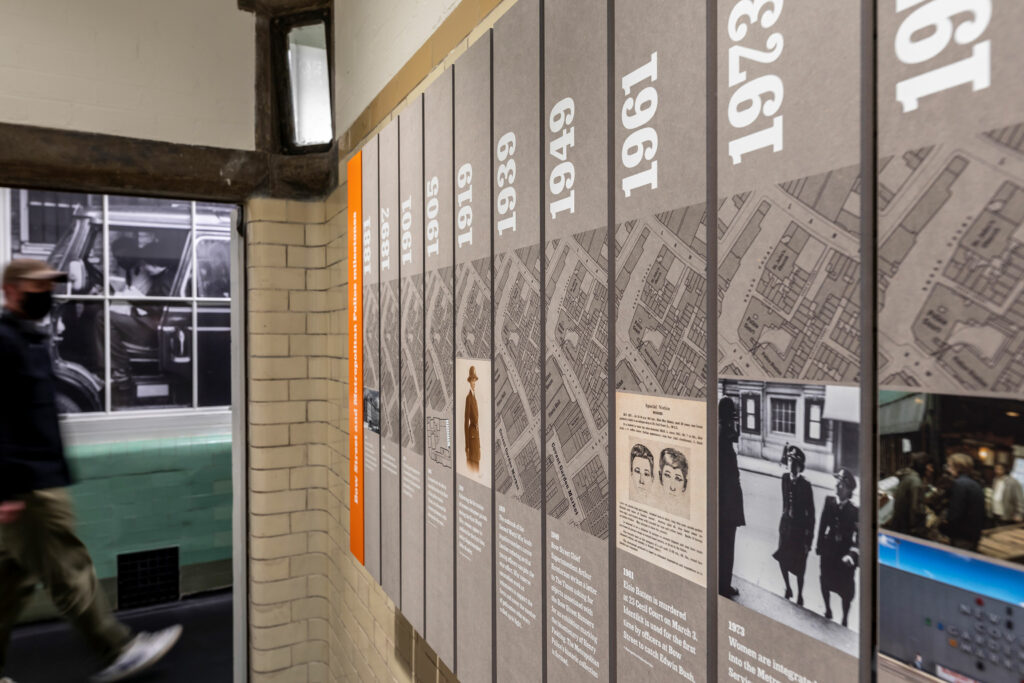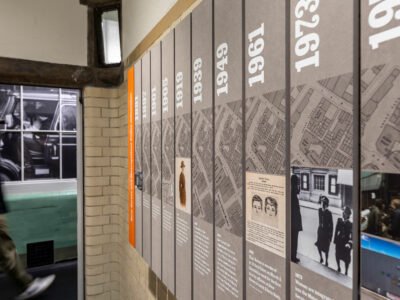Technological evolution and policing during eighteenth-century London
Written by Ellie Alexander

When most people hear the word technology they think of computers, mobile phones or the masses of technological advancements that have been developed since the twentieth century. Similarly when you hear of police technology, you might imagine CCTV, fingerprints and police cars. However, looking back at the ‘technology’ of the lower palaeolithic period you would find sticks for digging and wooden spears.[1] Technology is simply the applied use of scientific knowledge, and its evolution during the time of the Bow Street runners can be tracked through distinct criminal cases and events throughout the period.[2] Through the exploration of the Cato Street Conspiracy, murder of Elsie Batten and staged robbery of Joseph Randall, it is evident that technology was essential to Bow Street Runners and hugely aided the solving of crimes.
On 23 February 1820, twelve members of the Bow Street Runners took part in a raid on Cato Street against individuals planning to assassinate members of the Prime Minister’s Cabinet.[3] The conspirators sought revenge for the Peterloo Massacre which saw the death of fifteen men and women six months earlier at St Peter’s Inn Fields during a peaceful campaign for universal suffrage.[4] Viscount Sidmouth and Lord Castlereagh were the main targets as the pair were considered the most responsible members, and the conspirators planned to decapitate them before parading their heads around London parodying the treatment for traitors. They further planned to set fire to several buildings in London, seize public and private weapons and capture important places like the Bank of England before issuing a declaration establishing a provisional government.[5] The arrest of the guilty individuals might not have been possible without the short cutlasses and William Lacey pistols which the runners were armed with, especially as the traitors had markedly superior weapons.[6] Therefore without the technology to both defend themselves and bring the traitors to justice, the altercation might have ended very differently.
Although not necessary for the purposes of combat, technology was vital in a very different way for solving the Maxwell robbery using the first-ever bullet mould analysis which came to be considered the birth of ballistic forensics. Detective Henry Goddard was able to identify a small pimple in the bullet fired as part of an attempted robbery at the residence of Mrs Maxwell as reported by Joseph Randall. Randall claimed he had been woken by a noise and had a struggle with two masked men, one of whom fired a shot into his pillow. Suspecting foul play, Goddard inspected the mould Randall used to make his own bullets and discovered the same pimple in his mould. This revelation exposed the robbery as a staged attempt by Randall who sought to steal from his employer and blame it on masked assailants. [7]
The Officers at Bow Street were not only involved in the first arrest using the bullet mould analysis, but technology was also vital in solving the murder of Elsie Batten in 1961. On 3 March Detective Sergeant Raymond Dagg of the Police Officers from Bow Street was assigned the case of a murder with a pair of antique daggers at Louis Meier’s antique shop in Cecil Court.[8] Informed by the shop owner of a young man who had shown interest in the daggers and a curved dress sword earlier in the day and provided with a description, Dagg was able to create a likeness of the young man using a hand drawn ‘identikit’. The identikit was a piece of technology consisting of facial components which were initially hand drawn on to transparent foils and layered over one another to create an entire face.[9] The original identikit had been introduced just two years prior by Californian police officer Hugh MacDonald, consisting of 568 drawings of different facial features.[10] The invention allowed police to identify suspects and guilty individuals without the need for a dedicated artist which was expensive and required specific skill.[11] An interview with neighbours revealed the same young man had tried to sell the sword which was now missing. Sergeant Dagg was able to use the identikit again to create a second likeness based on the description from the neighbour and cross-reference the two. Posters were circulated to the press and police and just five days later Edwin Bush, 21 years old, became the first criminal in England to be prosecuted with the help of the identikit.[12]
The above cases illustrate both the importance of technology in the age of the Bow Street Runners and also how the law enforcement members were often pioneers of newly developing techniques during the 18th century and beyond. Advanced weapon technology was essential in bringing down the Cato Street Conspirators, but also represents one of the only instances in which cutlasses and pistols are mentioned throughout the history of the period. Although much more information exists around the identikit and bullet mould analysis, these examples show the Bow Street officers throughout time at the forefront of technological trends and as skilled in adapting to new crime-solving techniques.
[1] Ferraro, J. V. (2012) A Primer on Paleolithic Technology. Nature Education Knowledge 4(2):9
[2] “Meaning of ‘Technology’ in English.” Cambridge Dictionary. Accessed November 22, 2022. https://dictionary.cambridge.org/dictionary/english/technology.
[3] Hederer, Amber. “The West End Job: A Brief Outline of the Cato Street Conspiracy 1820.” The Cato Street Conspiracy, June 10, 2020. https://www.catostreetconspiracy.org.uk/about/the-west-end-job-bicentenary-of-the-cato-street-conspiracy-1820-2020.
[4] McElligott, J. and Conboy, M. (2020) The Cato Street Conspiracy: Plotting, Counter Intelligence and the revolutionary tradition in Britain and Ireland. Manchester: Manchester University Press.
[5] McElligott, J. and Conboy, M. (2020) The Cato Street Conspiracy
[6] Goldstein, A.M. et al. (2020) The Bow Street Runners, The Cato Street Conspiracy. Available at: https://www.catostreetconspiracy.org.uk/the-plot/the-bow-street-runners (Accessed: December 13, 2022).
[7] I.F.F. (2019) The History of Forensic Ballistics – ballistic fingerprinting, IFF Lab. Available at: https://ifflab.org/the-history-of-forensic-ballistics-ballistic-fingerprinting/ (Accessed: November 20, 2022).
[8] Long, D. (2012) in Murders of London: In the steps of the capitals killers. London: Random House, p. 100.
[9] NLEOMF (2010) Five cool artifacts in the collections of the National Law Enforcement Museum, National Law Enforcement Officers Memorial Fund. Available at: https://nleomf.org/five-cool-artifacts-in-collections-of/ (Accessed: November 30, 2022).
[10] L., L.R.C. et al. (2013) The Handbook of Eyewitness Psychology Memory For People. London: Taylor and Francis, P61.
[11] L., L.R.C. et al. (2013) The Handbook of Eyewitness Psychology Memory For People. London: Taylor and Francis, P61.
[12] Long, D. (2012) in Murders of London, p100.
Bibliography
“Meaning of ‘Technology’ in English.” Cambridge Dictionary. Accessed November 22, 2022. https://dictionary.cambridge.org/dictionary/english/technology.
Amber Hederer. “The West End Job: A Brief Outline of the Cato Street Conspiracy 1820.” The Cato Street Conspiracy, June 10, 2020.
A.M Goldstein. et al. (2020) The Bow Street Runners, The Cato Street Conspiracy. Available at: https://www.catostreetconspiracy.org.uk/the-plot/the-bow-street-runners (Accessed: December 13, 2022).
D Long. (2012) in Murders of London: In the steps of the capitals killers. London: Random House
I.F.F. (2019) The History of Forensic Ballistics – ballistic fingerprinting, IFF Lab. Available at: https://ifflab.org/the-history-of-forensic-ballistics-ballistic-fingerprinting/ (Accessed: November 20, 2022).
J. V. Ferraro (2012) A Primer on Paleolithic Technology. Nature Education Knowledge 4(2)
J McElligott and M Conboy. (2020) The Cato Street Conspiracy: Plotting, Counter Intelligence and the revolutionary tradition in Britain and Ireland. Manchester: Manchester University Press.
L., L.R.C. et al. (2013) The Handbook of Eyewitness Psychology Memory For People. London: Taylor and Francis
NLEOMF (2010) Five cool artifacts in the collections of the National Law Enforcement Museum, National Law Enforcement Officers Memorial Fund. Available at: https://nleomf.org/five-cool-artifacts-in-collections-of/ (Accessed: November 30, 2022).

